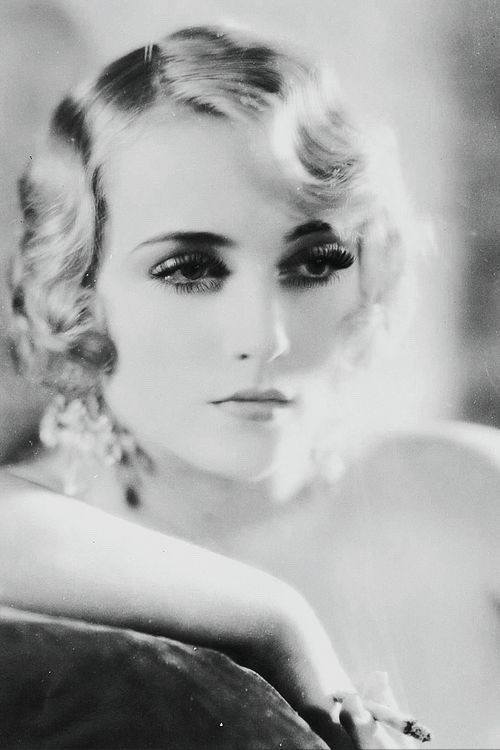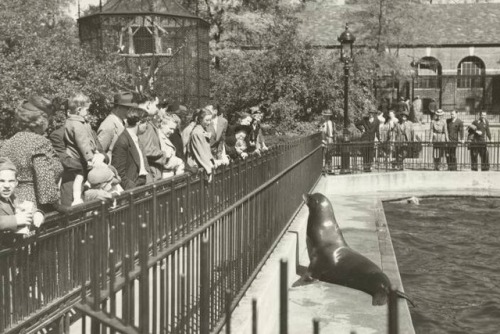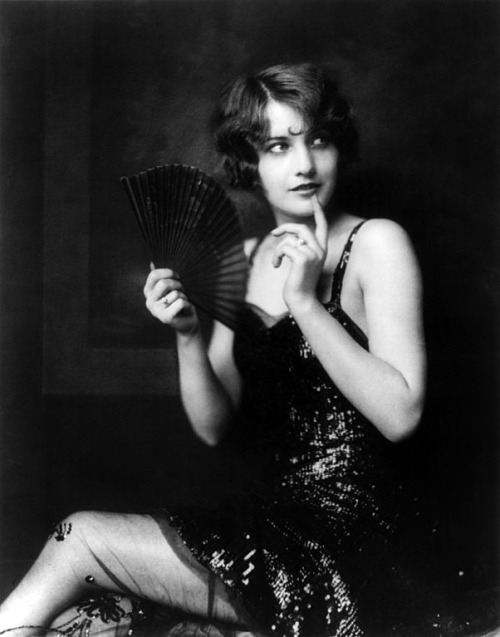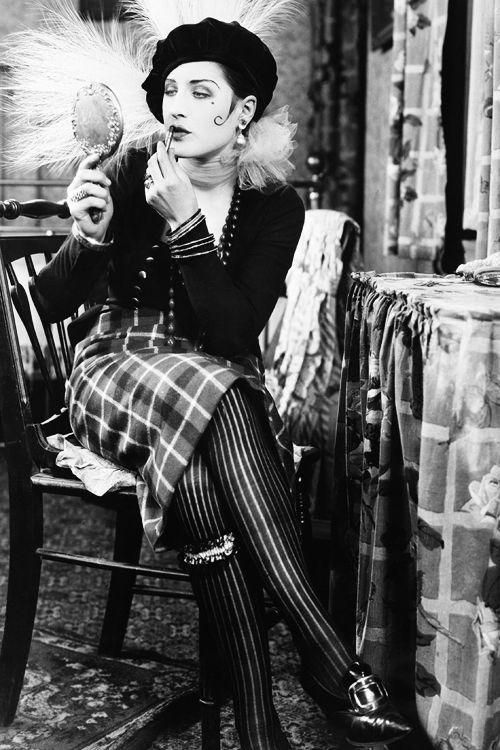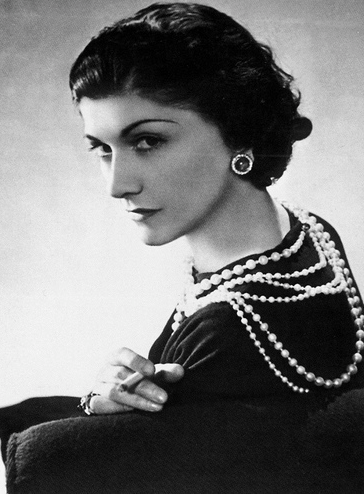#1920s photography
Judith Anderson’s views about ‘pleasure-bored’ flappers
Judith Anderson cuts a characteristically elegant figure in this portrait from the premiere production of George Kelly’s Behold the Bridegroom (Broadway, 1927-8). The Museum of the City of New York has a production photo featuring Judith and two of her co-stars, John Marston and Thurston Hall.
Judith portrayed a spoiled flapper, Antoinette Lyle, whose undoing proves to be the fact that she possesses every material thing and social advantage one could wish for and yet is entirely dissatisfied with life. Antoinette simultaneously has it all and is empty. Marriage risks becoming just another diversion.
In the press, Judith spoke candidly - and sagely - about the poisoned chalice of privilege, particularly in relation to the 1920s social phenomenon of the flapper. She emphasised that she herself had escaped the curse of the ‘society butterfly’ to find fulfillment in her career (which, by now, was tremendously successful). I find Judith’s comments fascinating; they’re not only enlightening in relation to social history but also point to her good sense and acute self-awareness. It’s fortunate, she concludes, that her father lost his fortune. There’s no fate worse than wealth, it seems.
‘The type of girl symbolized by Antoinette Lyle,’ in Behold the Bridegroom, says Judith Anderson, the play’s star, ‘is universal. I use the word in its purest meaning and I ought to know, for in the last year I have traveled far from the United States and back again. And on every continent, in every city and suburb, I meet the Antoinettes or the near Antoinettes. Not that I have ever known one who died either for self hate or for deep love, but I have known many who have reached the stage of utter boredom with life, complete dissatisfaction with themselves, and perfect understanding of the value of the years they have wasted.
[…]
‘The flapper in the United States has her prototype in Australia. Some time ago some one coined a name for the flapper’s big sister. I think it was “zipper”. They, too, exist in both continents. Rich and unrestrained, they dash through a youth full of pleasure only to approach their 30s blase and disillusioned and a trifle shopworn. When I was of the flapper age in Adelaide, my native town in Australia, I was brought up to be a society butterfly. Like the Lyles, we lived in a community considered smart for our part of the world. And many of the first families had daughters and sons who belonged to a fast set. They wanted to show the English visitors that the colonials weren’t dull and slow. Father was at one time a very wealthy man. He was called the “Silver King” of Australia. I was pampered and spoiled by him and his generosity, just as Mr. Lyle spoiled his daughter in the play. Were it not for a quiet, loving mother and her intelligent direction, I myself might have developed as Antoinette did under the limp disciplinary rod her father wielded.
‘I doubt, however, if I were temperamentally inclined towards such a hectic existence as I lead in Behold the Bridegroom. But children of the rich are prone to develop into selfish adults with a rudeness often mistaken for wit. Fortunately, father lost his money, so we picked up our lares and penates and moved out of the wealthy pleasure-bored set to Sydney, where I started on my stage career.’
- ‘Judith Anderson on Flappers’, The Brooklyn Daily Eagle, 11 March 1928
Post link
“Baby Shark” 1920 (potential just for fun kids series)
I saw this little boy last night with his wheelbarrow and I could immediately imagine my son in the backyard turning the hose faucet on and off and on again flooding out the yard. I also thought it would be even better if he caught a couple sharks while mom was chilling trying to have a break.
Post link

1919-20

Christmas market in Berlin at Alexanderplatz, 1923. A merchant sells Christmas tree decorations. Photography by Georg Pahl. (source: Bundesarchiv, Picture 102-00790 / Pahl, Georg).









Josephine Baker,
(3rd June 1906 - 12th April 1975)
Born in St. Lous, Missouri, Josephine Baker was a signer, dancer, and civil rights activist. After moving away from America and to France and leaving her husband at the age of 19, she joined a black vaudeville group. She became very popular in France during the 1920s and became one of the highest paid and most sought after performers in Europe.
During World War 2, Baker joined the French Resistance as a spy and whilst touring around Europe, she would carry large amounts of sheet music that had messages written on in invisible ink. She also used her fame to smuggle photographs of German military installations out of enemy territory. She gained the rank of lieutenant in the Free French Air Force and was awarded the Medal of Resistance and the Croix de Guerre.
In 1928, a Hungarian cavalry officer and an Italian count did just that in Budapest. According to a contemporary account from TIME magazine, “the ogling and attentions of Hungarian Cavalry Captain Andrew Czlovoydi became too fervently gallant to be stomached by La Baker’s manager, Count Pepito di Albertini.” The Count challenged the soldier to a sword-fighting duel. The duel took place in a cemetery and Baker cheered on her manager from her seat on top of a tombstone.
As a way to try and combat the racism of the time and show an example to the world, Baker adopted twelve orphaned children of various ethnicities and countries.
Baker received a pet cheetah named Chiquita to use as part of her dance show, and after the act was finished she chose to keep the animal. Chiquita traveled the world with Baker, road in her car and slept in her bed. She had a goat named Toutoute who lived in her dressing room at her nightclub, and at the same club she had a pet pig named Albert who lived in the club’s kitchen and ate on the food scraps. Albert got so large from his lavish lifestyle that he couldn’t get through of the kitchen’s door any longer and the door’s frame had to be taken off.
Ernest Hemingway once called Baker “the most sensational woman anyone ever saw.” While in Paris, Baker mixed socially with some of the most famous creatives of the Jazz Era, including Jean Cocteau and Pablo Picasso, the latter of whom called her “the Nefertiti of now” and jumped at the chance to paint the singer.
Josephine Baker was an advocate of civil rights. During a visit to America in the 1950s she was refused entry to multiple hotels (36 throughout her career) under segregation, which led to her writing articles about racial equality and campaigning with the National Association for the Advancement of Colored People, as well as refusing to perform in segregated venues, regardless of how much they offered to pay her.
In 1963, she joined Martin Luther King Jr to speak at the March on Washington, and after his assassination was asked by his wife to take her husbands position as the leader of the movement, but declined in fear of endangering her children.
Although she spent most of her life in France, Baker rememberd the impact of segregation and institutionalised racism from her childhood in St Louis where she left school at age eight to become a live-in domestic servanas where she was not allowed to look her employer in the eye and was once punished by a woman for using too much soap in the laundry and received burns to the hand.
When Baker died of a cerbebral haemorrhage, she received a full Roman Catholic funeral, and was the only American born woman to have full french military honours.
⭐️ another fun fact!⭐️
In the 1997 animated film ‘Anastasia’, there’s a quick camero of Josephine Baker during the song ‘Paris Holds the Key (To your Heart)’ and she can be seen wearing her iconic banana dress and walking her pet cheetah.





Nosferatu, 1922






Exit Smiling - 1926
“An employee of a touring theatrical company falls for a fugitive”




The Cabinet of Dr. Caligari (1920)


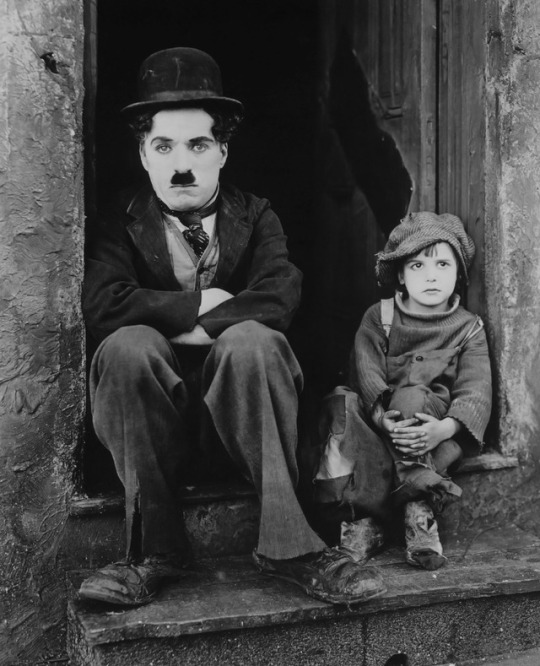
“The Kid”
- 1921



